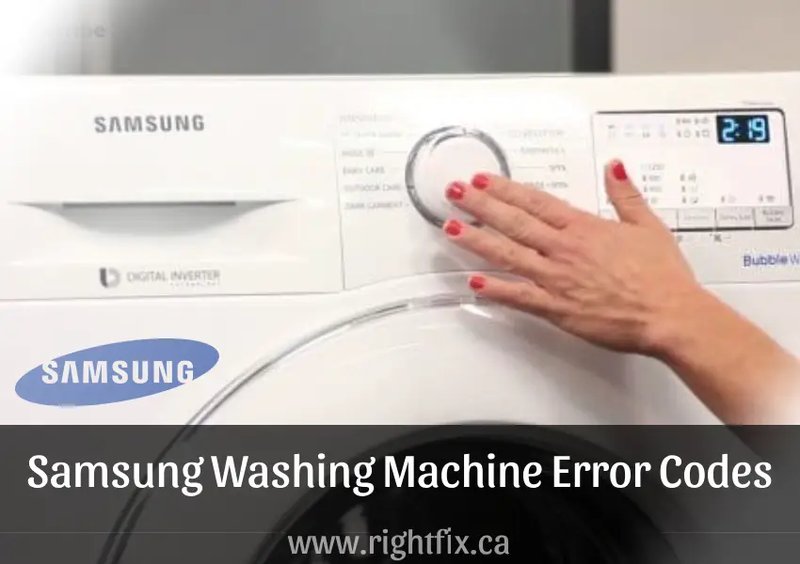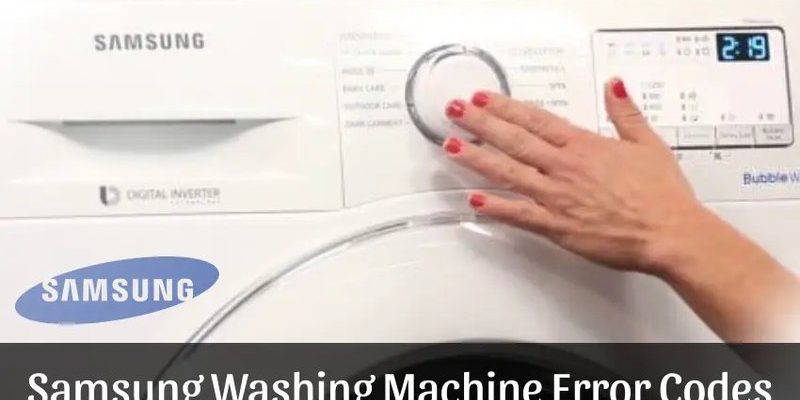
Understanding what your washing machine is saying with an SE error code is essential. It’s a bit like hearing a strange noise in your car; you could ignore it for a while, but eventually, you might end up stranded on the side of the road. The SE error in Samsung washing machines usually refers to a drainage problem, meaning your machine has a tough time getting rid of water. Ignoring this issue is like leaving a pot boiling over; while it might not cause immediate chaos, trouble is definitely simmering.
What Does the SE Error Code Mean?
When your Samsung washing machine displays an SE error code, it’s alerting you to a drainage issue. Imagine trying to pour water out of a bottle that’s stopped up with a cork—that’s essentially what’s happening inside your washer. The machine is struggling to drain the water, which can eventually lead to more severe problems if left unaddressed.
The common culprit for this error is a clogged drain pump filter. Think of the filter as the machine’s strainer, catching debris, lint, and other small particles that can obstruct the water flow. Over time, this filter can get clogged, restricting the water from draining effectively. Another potential cause could be a kinked or blocked drain hose, akin to a garden hose with a kink, causing water to back up.
Ignoring the SE error can result in more than just a minor inconvenience. Water that doesn’t drain can lead to damp clothes that never seem to get dry, and worse, lingering water in the machine can promote mold growth. It’s a problem that can escalate quickly, so addressing it promptly is crucial.
How to Fix the SE Error Code
Here’s the deal: fixing the SE error often requires a bit of hands-on troubleshooting, but it’s nothing you won’t be able to handle with a little guidance. The first step is to unplug your washing machine to ensure safety before you begin. Safety first, right? Next, locate the drain pump filter. This is usually found at the bottom front of the washer behind a small access panel. Remove any screws or tabs to access the filter.
Once accessed, prepare for a bit of water spillage by placing towels or a shallow pan under the filter area. Carefully unscrew the filter cap and pull it out. You might find lint, coins, or even a stray sock causing the blockage. Clean it thoroughly, reattach it, and close the panel before plugging your machine back in.
If the filter isn’t the issue, the drain hose might be the next thing to check. Ensure it’s not kinked or blocked. Sometimes, repositioning it can solve the problem. If these steps don’t resolve the error, it might be time to consult a professional, as the issue could be more complex, involving the pump or internal electronics.
Preventing Future SE Errors
To prevent future drainage hiccups, regular maintenance goes a long way. Just like you wouldn’t skip an oil change for your car, don’t overlook basic washer upkeep. Regularly check and clean the drain pump filter, perhaps once a month, to prevent clogs from building up.
Another simple yet effective step is ensuring that your laundry loads are balanced and appropriate in size. Overloading your washer can put unnecessary strain on its components, leading to mishaps like drainage issues. Think of it like overstuffing your backpack; eventually, the straps might give out.
Also, make it a habit to inspect the drain hose from time to time. It’s a straightforward check that can save you from more significant problems down the line. If you notice anything amiss, such as leaks or blockages, addressing them early will keep your washing machine running smoothly.
Consequences of Ignoring the SE Error Code
You might be wondering, “What if I just pretend the error doesn’t exist?” In the world of washing machines, ignorance isn’t bliss. Ignoring the SE error can lead to stagnant water inside the drum, leaving clothes improperly washed and even musty. Imagine leaving your damp towel in a dark gym bag for days—it won’t smell pleasant.
Moreover, standing water can create a breeding ground for mildew and mold, not just in your clothes but within the machine itself. Once mold sets in, it can be tricky to fully eradicate, potentially affecting every load of laundry you do from that point onward.
Finally, long-term neglect of drainage issues can strain the machine’s motor and pump. This could lead to costly repairs or even necessitate a premature replacement of your washing machine. Addressing the SE error promptly not only spares you future expenses but also extends your machine’s lifespan, much like giving a car regular check-ups keeps it running longer.
So, the next time you see that SE code flashing, don’t dismiss it. Take action, follow the steps, and maintain your machine to ensure clean, fresh laundry every time.
